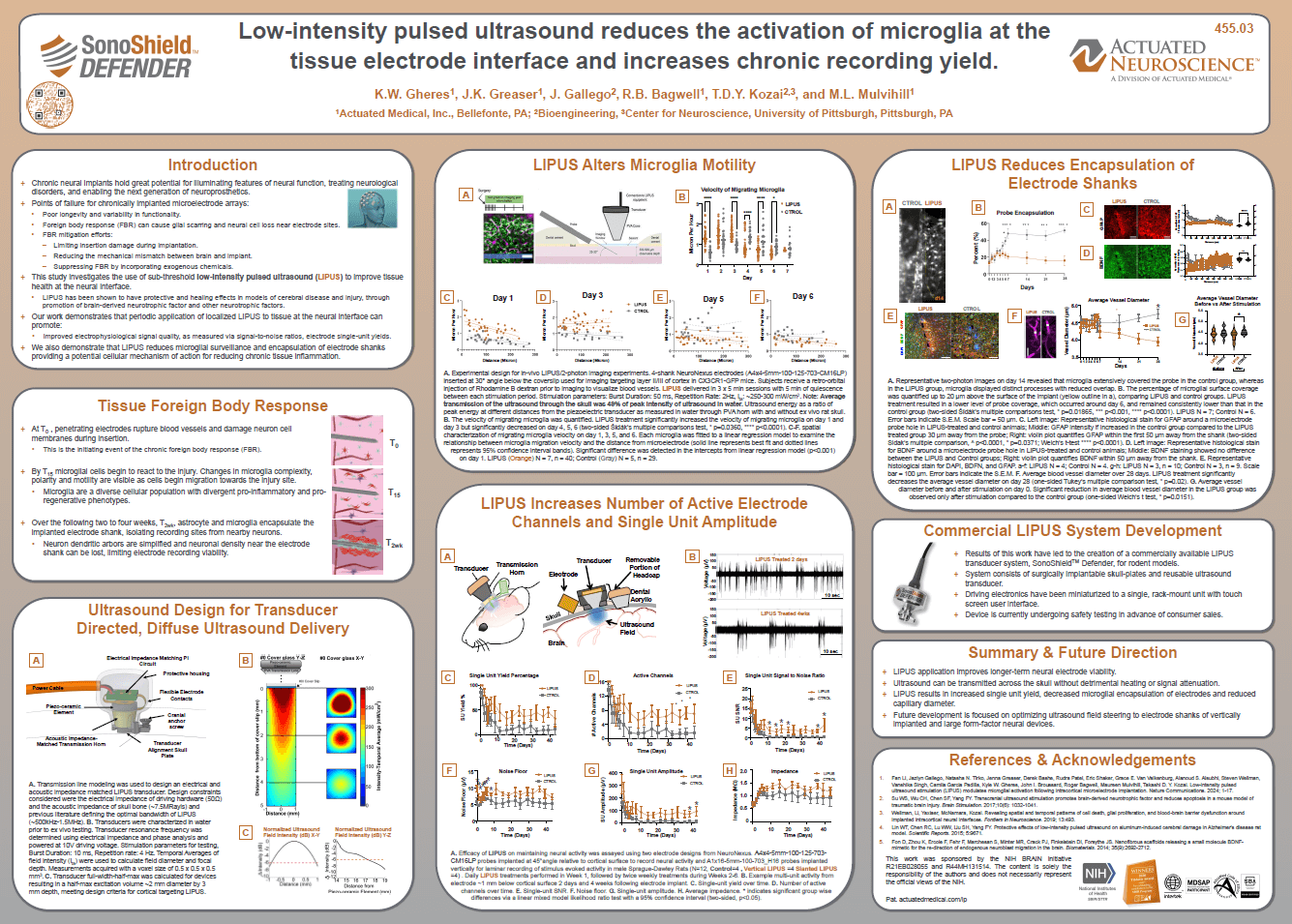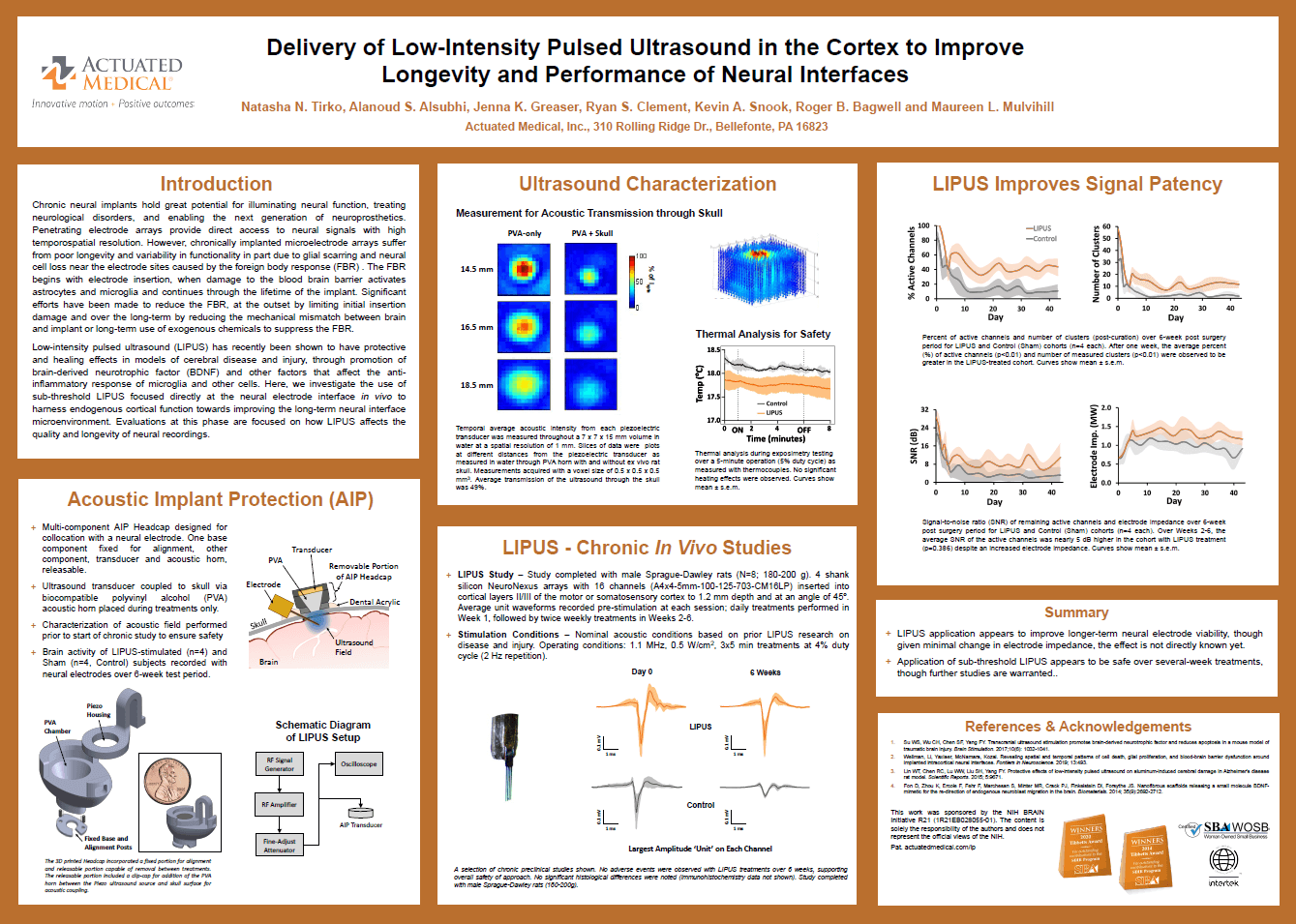Our Innovation, Your Research Breakthrough
Low-intensity pulsed ultrasound stimulation (LIPUS) modulates microglial activation following intracortical microelectrode implantation
Electrodes interfacing with neurons has a key challenge, in that the immune response reduces the signal over time. In this series of studies to optimize the long-term viability of electrodes, Jeffrey Capadona and his team at Case Western University coated electrodes with specialized bioactive molecules to minimize inflammation around the electrode. With NeuralGlider, this team was able successfully demonstrate that the MnTBAP enhanced electrode longevity.
Li, F., Gallego, J., Tirko, N. N., Greaser, J., Bashe, D., Patel, R., Shaker, E., Valkenburg, G. E. V., Alsubhi, A. S., Wellman, S., Singh, V., Padilla, C. G., Gheres, K. W., Broussard, J. I., Bagwell, R., Mulvihill, M. & Kozai, T. D. Y. (2024). Low-intensity pulsed ultrasound stimulation (LIPUS) modulates microglial activation following intracortical microelectrode implantation. Nature Communications, 15(1), 5512. https://doi.org/10.1038/s41467-024-49709-9




